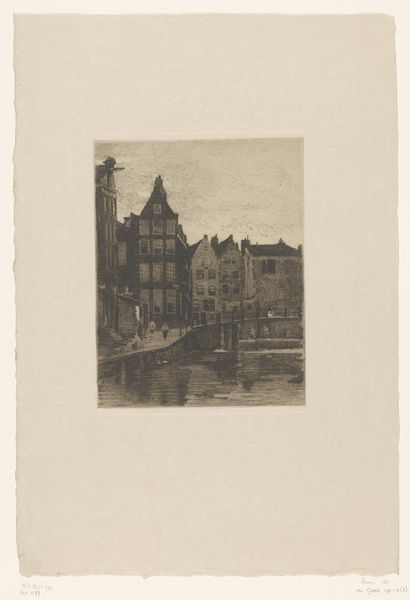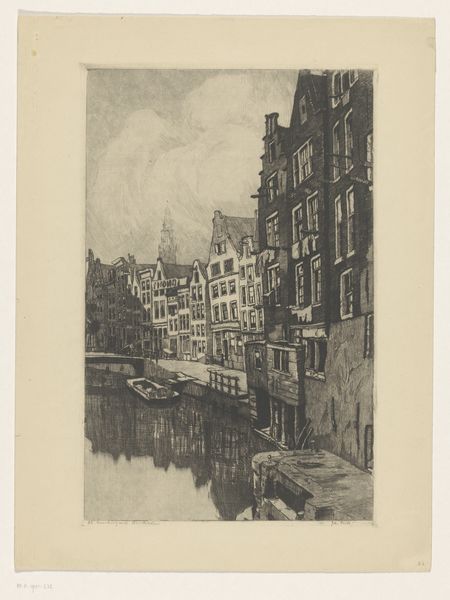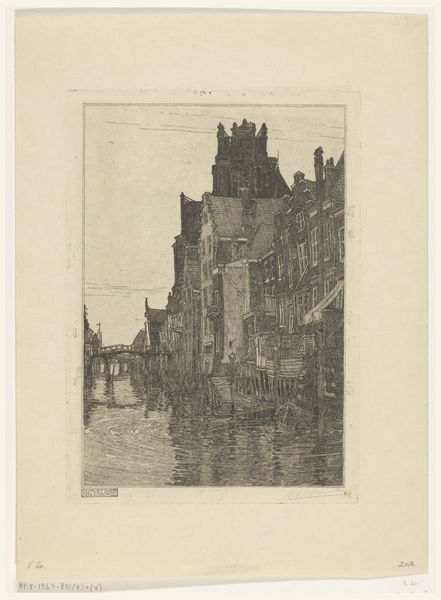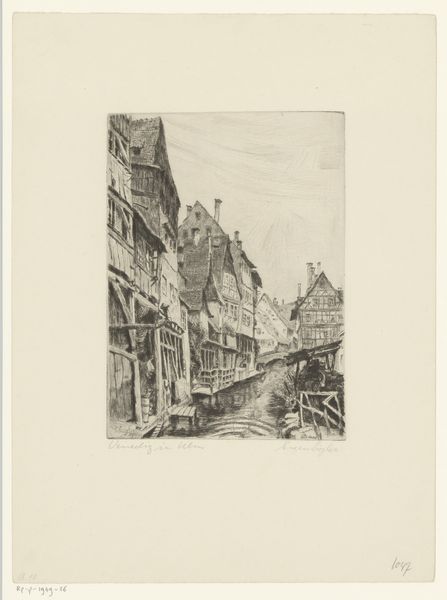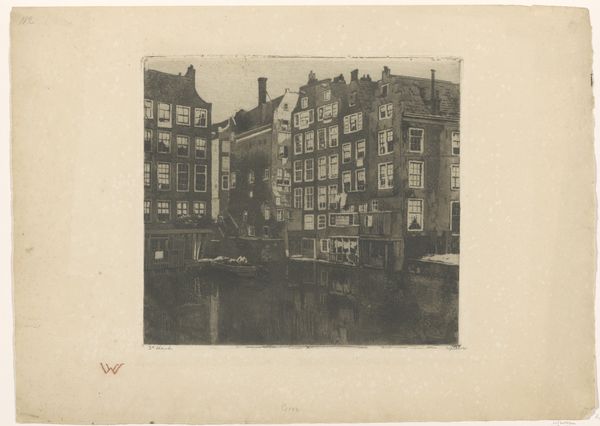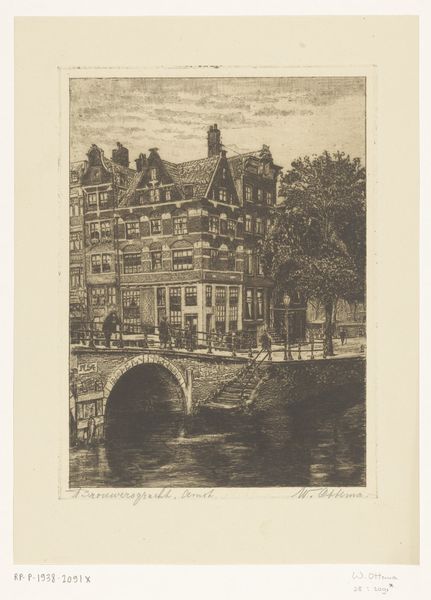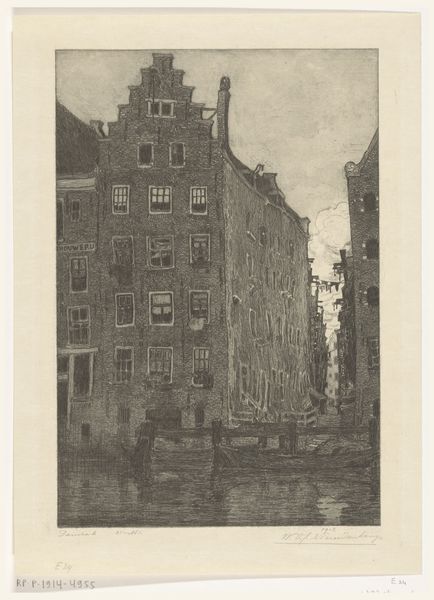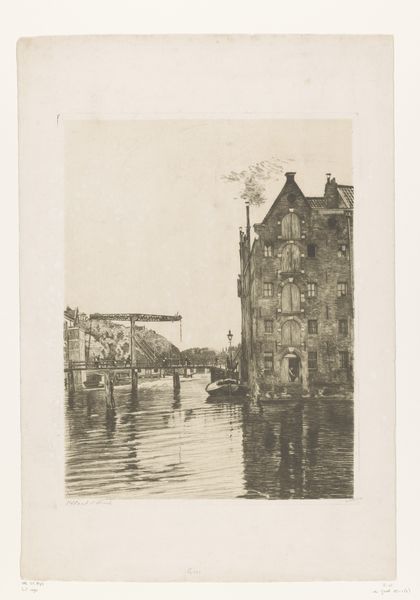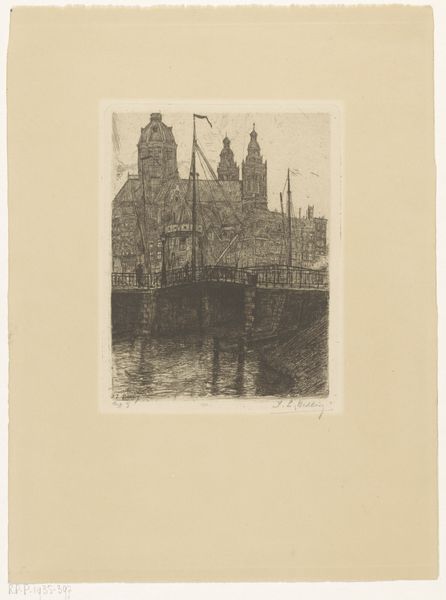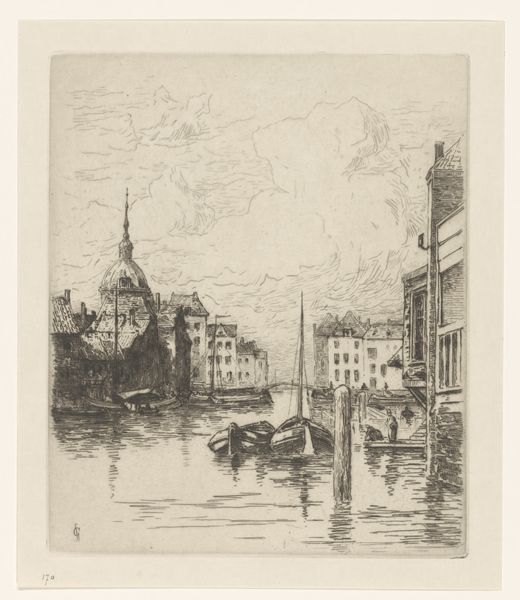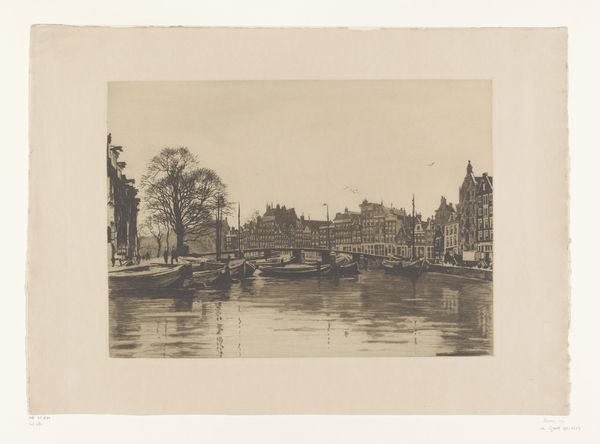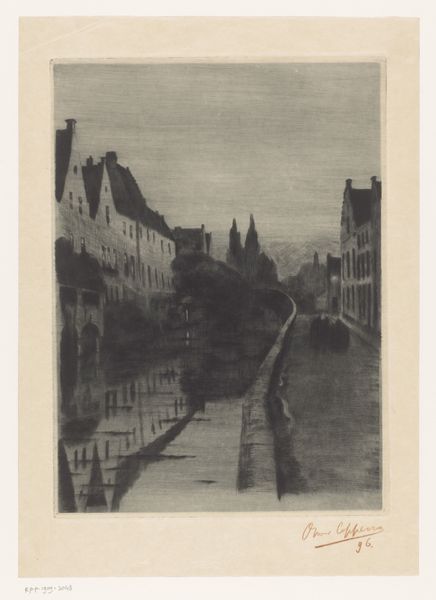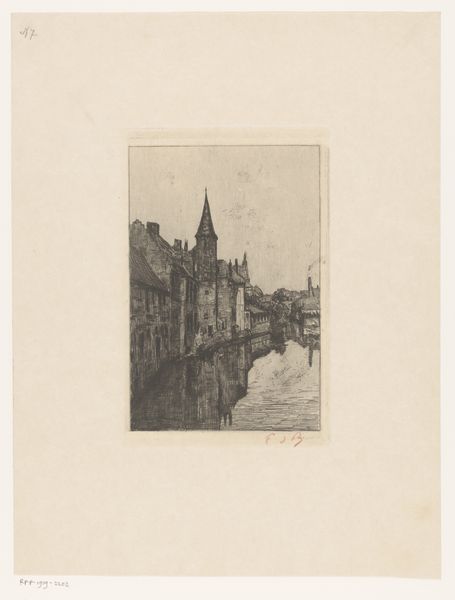
print, etching, paper
#
dutch-golden-age
# print
#
etching
#
landscape
#
paper
#
cityscape
Dimensions: height 236 mm, width 186 mm
Copyright: Rijks Museum: Open Domain
Curator: Before us, we have Willem Witsen’s "View of Houses and a Bridge in Amsterdam," dating from around 1915 to 1919. The artist rendered it as an etching on paper. Editor: There’s a delicate stillness to this piece. The composition leads my eye into the quiet, almost dreamlike rendering of Amsterdam. Curator: The tonal range in this etching creates subtle variations within the image's details. Note the buildings—observe their careful arrangement in relation to the bridge. It strikes me that Witsen has skillfully employed etching to articulate form through line and texture. Editor: And the historical context…early 20th century Amsterdam. You have to wonder about the social atmosphere here, around the First World War; Amsterdam maintained neutrality, and Witsen captures the city almost unaware of global chaos, rooted in the past, wouldn't you agree? Curator: Indeed, this connects with Dutch art's enduring theme of portraying domestic life, offering an intimate perspective of daily realities during times of great change, I agree. Yet, there is something modern here, too, isn’t there? In his capturing of transient reflections of water, there's a nod toward abstraction, something forward-thinking, as we see the influence of Symbolism at play in that evocation. Editor: And perhaps his choice of such an 'ordinary' scene – not a grand canal view, but an intimate snapshot – it hints at an inclination toward more egalitarian representation and a move away from Romantic grandstanding that dominated landscape art through the nineteenth century. Witsen seems to capture modernity through intimate daily life. Curator: Precisely, and while maintaining adherence to structure through architecture, Witsen’s etching methods are evident: in texture we understand Amsterdam beyond simplistic replication; rather it seems we have Witsen’s rendering that is also capturing subjective engagement. Editor: It is a wonderful example of how artistic vision captures both a particular historical and temporal context and can provide much food for reflection. Curator: Agreed. Examining the artwork reminds us of how artists reconcile aesthetic exploration alongside profound historical occurrences through different creative renderings.
Comments
No comments
Be the first to comment and join the conversation on the ultimate creative platform.
